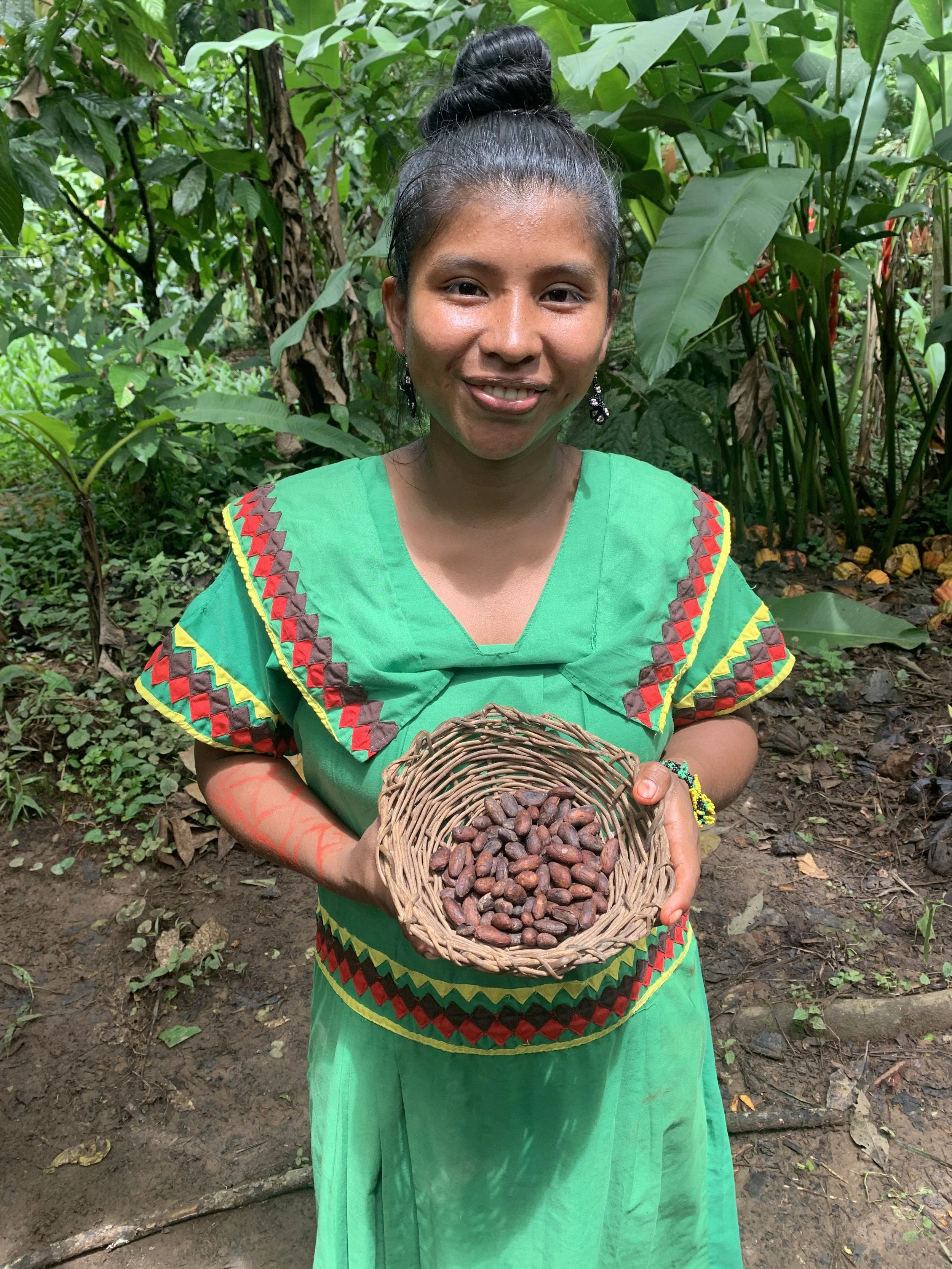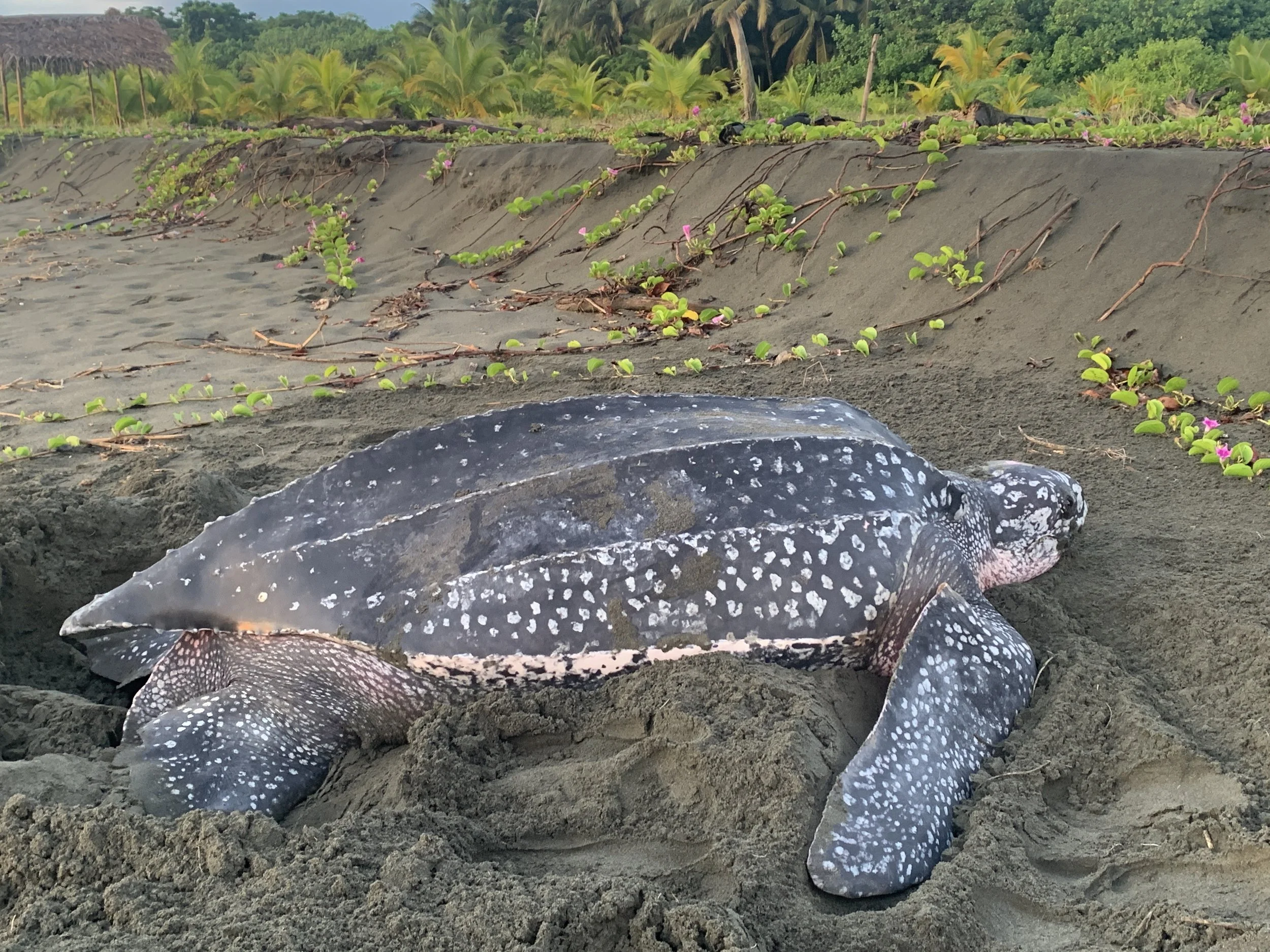Exploring Bocas del Toro, Panama
Our small plane eased gently out of the clouds to show the full archipelago of Bocas del Toro on a sunny June day. This area region on Panama, known for visitors from nearby Costa Rica, is truly an ecological gem. Composed of nine main islands, along with beautiful bays and ocean, mangrove cayes, and the northern Caribbean coastline, Bocas del Toro is home to a large part of the country’s indigenous population as well as native flora and fauna. After a quick stop for lunch in Bocas town, located on Isla Colon, we headed out by boat to the Soropta Field Station, along the mainland coast about an hour ride away.
Our group was here for our first Panama Leatherbacks & Hawksbill trip with our partners and friends at the Sea Turtle Conservancy. For five nights, we would be walking the turtle nesting beach and supporting the research and conservation work by our partners. We passed by a local family known for its illegal collection of turtle eggs, a stark reminder that much work remains to be done to protect these nesting turtles and their eggs. We arrived to the station in time for a release of leatherback hatchlings to the ocean, a wonderful introduction to the station.
That night we were treated to a rare experience; the Sea Turtle Conservancy staff were putting a satellite transmitter on a leatherback turtle, as part of their Tour de Turtles, a fun race between turtles in various spots around the Caribbean and Atlantic (follow this turtle CU-perina II here). While putting a transmitting on a leatherback is a bit more intensive than gluing a transmitter to the carapace of a hard-shell turtle, the information collected is critical to understanding the life cycle of these turtles. On our way back from witnessing this nesting turtle, our group encountered another and several of the group were able to help with the eggs to bring them to the hatchery, where they will be protected until hatching.
The next day, we had an introduction to the research being carried out at Soropta. This beach is one of the more important leatherback beaches in the Caribbean and has seen dramatic increases in nesting over the past few years. This season was a down one compared to a year ago, but still had more than 700 nests this season to date. STC staff are working on research to understand the composition of the sex of the leatherback hatchlings, as well as the health of this population. SEE Turtles, through our Billion Baby Turtles program, has been helping to fund the work at this beach since 2013, having provided more than $45,000 which has helped to save an estimated 60,000 leatherback hatchlings.
The next night, we headed out for another night of patrolling the beach. Shortly after the skies opened up, and the rain and wind kicked in, a turtle arrived. But members of our group got the full turtle experience, waiting until she nested and helped to bring the eggs to the hatchery just as the rain subsided. The next day, we headed to the Oreba Chocolate Tour, a wonderful activity run by the Ngobe indigenous community. Their fantastic guides showed us around their community, showing how the cacao is grown and processed, along with some of the plants and animals they use for sustenance and medicine. At the end of the trip, we were served a delicious traditional lunch and picked up chocolate and other crafts for souvenirs.
One day, our group collectively decided to get up for sunrise to see if there was a late nester that we might be able to see in the daylight. I was up a bit before the group and could see a beautiful sunrise forming over the water so I headed out to the beach to see if I could spot a turtle. I quickly noticed just a few meters from the entrance to the beach a dark spot of sand that was obviously a nest. Thinking we had missed a turtle right in front, as I started to walk over to inspect the nest, I noticed movement and realized the turtle was still there! I quickly ran back to the station to alert the group and back out to start taking photographs.
Nesting leatherback in Soropta. Photo: Brad Nahill / SEE Turtles
I spent several seasons working with leatherbacks in Costa Rica and have visited dozens of nesting beaches around the world but this was the best turtle experience I’ve had. Between the happy group, the beautiful sunrise, and witnessing the full nesting process in daylight, it was a morning I’ll never forget. Later that day, we headed out for a tour of the area’s canals, seeing many species of birds along the waters.
We wrapped up our tour visiting a couple of spots around the archipelago. The first stop was Starfish Beach, the most popular spots in the country, filling up with sunbathers every weekend. This area was visited by Christopher Columbus on his fourth visit to the hemisphere in the early 1500’s. Fortunately for us, we went on a Thursday when it was much more relaxed. We borrowed some snorkeling gear to check out the many sea stars around the clear waters, and relaxed with drinks by the beach. That night we had a free night to explore Bocas town, the main tourist area of the archipelago.
On our final full day, we did a full day tour of the islands, starting with looking for sloths along the water’s edge and bottlenose dolphins in the bays (we saw several of both). Later we headed to an area to snorkel and see some of the fish and coral species that live here. Finally, we ended with a picnic lunch on Zapatilla Caye, one of three islands in the Bastimentos National Marine Park where hawksbill turtles nest. While it was too early to see any hawksbills, we were able to take a walk through the island and snorkel in the crystal blue waters. SEE Turtles, through our partnership with the Berman Memorial Fund, has also been supporting the hawksbill nesting work of renowned researchers Annie & Peter Meylan, who have worked with community members for decades.
On our final night in Bocas, we met for a group dinner in a beautiful restaurant along the water. Unfortunately we had another taste of the reality of the situation for sea turtles in this area, witnessing two vendors who had tortoiseshell products for sale at tables along the main street. The good news for hawksbills is that since the end of the legal international trade, their numbers have grown significantly in this area and others, but the illegal trade continues to threaten this critically endangered species. Our Too Rare To Wear program is working to combat this trade (check out our SEE Shell App that can ID these products here) and we’re hopeful that hawksbills can recover over the long-term. With partners like Sea Turtle Conservancy leading the way, much progress is being made in Panama and around the world.


